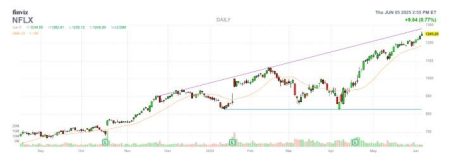The Casualty List: An Investment Strategy for Undervalued, Battered Stocks
The investment landscape is littered with stocks that have experienced significant declines. However, a declining stock price doesn’t automatically equate to a bargain. Conversely, a seemingly cheap stock isn’t necessarily a good investment. The ideal investment opportunity lies in identifying stocks that are both down and genuinely undervalued. This is the premise behind the "Casualty List," a curated selection of stocks that have suffered substantial recent losses but possess compelling rebound potential.
D.R. Horton: A Homebuilder Poised for Recovery?
D.R. Horton (DHI), the largest U.S. homebuilder, exemplifies a casualty stock. The company’s stock price tumbled 26% in the fourth quarter amidst a rising market, largely due to the adverse impact of high mortgage rates on the housing market. While the stock has delivered impressive long-term returns (543% over the past ten years), the current environment presents challenges. High home prices, fueled by low existing mortgage rates, deter homeowners from selling and upgrading, thus constricting the supply of new homes. Despite these headwinds, D.R. Horton’s stock trades at a compelling valuation of approximately 10 times earnings, suggesting an attractive entry point for investors anticipating a resurgence in the housing market. The underlying demand for single-family homes remains strong, hinting at potential future growth.
Nucor and Huntington Ingalls: Navigating Industry-Specific Challenges
Nucor Corporation (NUE), the largest U.S. steel manufacturer, also finds itself on the casualty list following a 22% decline in the fourth quarter. While steel companies already benefit from some tariff protection, the potential for increased tariffs under the current political climate adds another layer of complexity to its outlook. Nucor faced challenges in 2024 with declining sales and profits, attributable to weak demand from the automotive, housing, and commercial real estate sectors. However, the company’s historical performance, marked by consistent sales growth and strong earnings, suggests resilience. The divided opinions among analysts covering Nucor—a mix of buy, hold, and sell ratings—point to an uncertain outlook, which can create opportunities for the stock to outperform expectations.
Huntington Ingalls Industries (HII), the largest builder of ships for the U.S. Navy, experienced a steep 28% decline in the fourth quarter. The company’s near-duopoly with General Dynamics in naval shipbuilding provides a degree of market power, but recent challenges have weighed on performance. Contract negotiations predating the COVID-19 pandemic, coupled with the subsequent loss of shipbuilding experience in the company’s yards, have contributed to disappointing earnings. Despite the stock’s substantial decline, the company’s consistent track record of strong return on equity (20% or better in nine of the past thirteen years) suggests underlying strength. The potential for increased Congressional spending on naval warships, driven by geopolitical factors such as China’s growing naval fleet, could further bolster HII’s prospects.
Peabody Energy: A Contrarian Bet on Coal?
Peabody Energy (BTU) presents a contrarian investment opportunity in the often-maligned coal industry. Despite widespread predictions of coal’s demise, the industry has witnessed a resurgence due to increasing electricity demand and political support. Peabody’s relatively healthy balance sheet, with debt representing only 12% of net worth, provides a degree of financial stability. The stock’s 21% decline in the fourth quarter, driven by investor concerns over the company’s acquisition of Anglo American’s metallurgical coal business, may present a buying opportunity. With a price-to-earnings ratio of five, Peabody Energy offers a speculative play for investors willing to bet on the continued relevance of coal.
Evaluating the Casualty List Strategy: Past Performance and Disclosures
The Casualty List strategy, encompassing 87 iterations over time, has demonstrated a historical average one-year return of 14.8%, outperforming the S&P 500’s average return of 11.5% over the same periods. More than half of the Casualty Lists have been profitable, with a majority outperforming the benchmark index. However, it’s crucial to acknowledge that past performance is not indicative of future results. The most recent Casualty List yielded mixed results, with two stocks exceeding 13% gains but falling short of the surging S&P 500, while the remaining two picks experienced losses. This underscores the inherent risks associated with investing in volatile stocks.
Full transparency requires disclosing any potential conflicts of interest. The author owns D.R. Horton stock on behalf of one or more clients and holds a personal stake in General Dynamics, as well as owning the stock for most clients. This information is essential for readers to assess the objectivity of the analysis and make informed investment decisions. The Casualty List represents a hypothetical portfolio and should not be mistaken for actual client portfolio performance. It’s essential to conduct independent research and consider individual risk tolerance before making any investment decisions.










